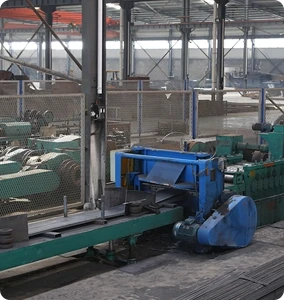Barbed Wire Fence A Symbol of Division and Protection
Barbed wire fences have become ubiquitous in our modern world, serving various purposes from agricultural boundaries to security measures. This simple yet ingenious invention consists of steel wire with sharp barbs spaced at regular intervals, designed to deter unwanted intruders. While it is widely recognized as a tool for enclosure, the implications of barbed wire fences extend beyond mere practicality; they symbolize division, control, and, at times, protection.
Historically, barbed wire was invented in the late 19th century, with its first patent granted in 1867 to Lucien B. Smith. Initially intended for livestock management, it rapidly revolutionized farming practices in the United States, allowing farmers to confine animals without the need for expensive wooden fences. Its simplicity and effectiveness led to its widespread adoption, and soon, barbed wire became a hallmark of the American West. The invention facilitated ranching and farming, enabling settlers to claim territory and define property lines.
Barbed Wire Fence A Symbol of Division and Protection
Yet, the darker side of barbed wire fences cannot be overlooked. Historically, they have served as powerful symbols of division. In times of conflict, barbed wire has been employed to build both literal and metaphorical walls. During World War I and II, barbed wire was used extensively to create trenches and protect military encampments, marking the physical terrain of battlefields. It came to symbolize the horrors of war, representing not just physical barriers but also the emotional and psychological divisions between enemies.
barbedwire fence

In the contemporary context, barbed wire is often associated with geopolitical conflicts and the refugee crises that accompany them. Countries establishing borders use barbed wire fences to deter illegal crossings, which evokes feelings of both protection and exclusion. For millions around the world, these fences represent not just a barrier, but a stark reminder of their displacement and the longing to belong. The images of barbed wire surrounding refugee camps emphasize the fragility of safety and the complex dynamics of national security versus human rights.
Moreover, within the context of environmental conservation, barbed wire fences can have negative implications. Wildlife corridors are often disrupted by these fences, which can impede the natural migration routes of animals. Conservationists argue that solutions to protect both human interests and wildlife must be sought, suggesting alternatives to barbed wire that could maintain boundaries while allowing for ecological movement.
Despite its utilitarian benefits, barbed wire is a double-edged sword. In some communities, the presence of barbed wire signifies marginalization and control, creating an atmosphere of fear and distrust. The visual harshness of a barbed wire fence can transform a neighborhood, instilling a sense of unrest among residents and visitors alike. Its existence can spark debates over issues such as immigration, security, and the ethics of exclusion.
Conversely, for many farmers and landowners, the barbed wire fence remains a crucial tool for managing property and livestock. It represents boundaries that are necessary for cultivating land, fostering a sense of ownership and responsibility. It embodies a commitment to protect both agricultural investments and the well-being of livestock, signaling the harmony between humans and nature.
In conclusion, the barbed wire fence is multi-dimensional, serving as a practical solution for many while embodying deeper societal issues. It represents the ever-present tension between protection and division, highlighting the fine line between security and isolation. Awareness and understanding of the implications of barbed wire fences are vital as we navigate our complex world, reminding us that sometimes, the boundaries we create reflect not only our needs but also our values and the narratives we wish to uphold. Ultimately, the narrative of the barbed wire fence is one of human intention, illustrating the ways we define safety, security, and the spaces we inhabit.
-
Why Galvanized Trench Cover Steel Grating Resists Corrosion
NewsJul.10,2025
-
The Versatility and Strength of Stainless Expanded Metal Mesh
NewsJul.10,2025
-
Load Calculations in Steel Grating Platforms
NewsJul.10,2025
-
Keeping Pets and Kids Safe with Chicken Wire Deck Railing
NewsJul.10,2025
-
Hole Diameter and Pitch for Round Perforated Metal Sheets
NewsJul.10,2025
-
Aluminium Diamond Mesh in Modern Architecture
NewsJul.10,2025
Subscribe now!
Stay up to date with the latest on Fry Steeland industry news.

